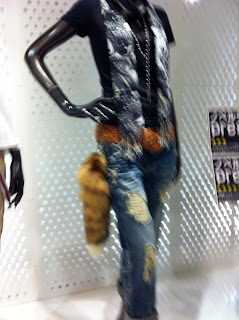Last weekend, my friend told me he wanted to go to a theme park called Namja Town. Technically, it couldn't actually be considered a theme park, since it was so small and inside of a mall. (Which made Namja Town harder to find.) From the outside, Namja Town looked like a place for children to play and to enjoy themselves. Once inside, we discovered that there were also many attractions that involved food. One of these food attractions was the gyoza town. All of the tiny shops inside this area served only gyoza and drinks. We even found gyoza shaped into characters from the anime, "Bleach."
As we explored Namja Town further, we found an area that had only icecream vendors. Each place served exotic and baffling flavors of icecream, such as: soy sauce flavor, ramen flavor, octopus flavor, cow tongue flavor, ungai flavor, and many more.
The attention to detail was amazing. The ramen flavored ice cream had miniature bamboo shoots and pink fish cakes. The unagi flavored ice cream even had a separate package to put spices on the ice cream.
This place, to me, is the epitome of modern Japan and it's obsession with "kawaii."
This blog is for educational purposes only; as such it is a capitalism-free zone. The views, images and opinions expressed here are those of the author only, unless otherwise noted The author does not necessarily share or endorse any of the views or contents of linked sites. All responsibility for "Visual Anthropology of Japan" lies with the author and not any institution he may be affiliated with. Peace.




























